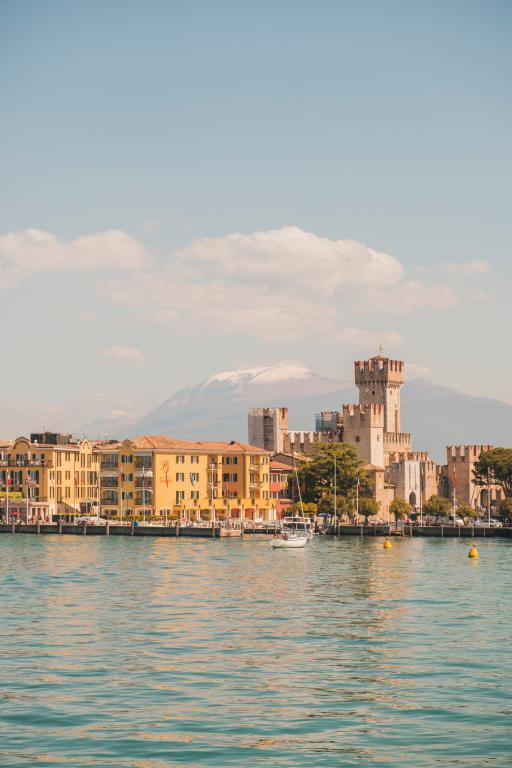
Details
Solution type
This case study is part of a project catalogue produced by ReUseHeat to inspire how to utilize excess heat from urban sources for heating and cooling purposes. The catalogue contains 25 existing or planned projects, 12 of which are Danish and 13 from other European countries.
Description
The municipality of Castelnuovo del Garda, near Lakearda in northern Italy, received funding in 2012 to establish a district heating system. The network is mainly powered by residual heat from a nearby industry. The first phase was inaugurated in March 2014.
Facts about the case |
|
| Installed heating capacity: 1320 kW Heating source: Low temperature industrial residual heat (30°C) Temperatures: Resdual heat is colled form 30°C to 25°C. District heating water is heated from 40 °C to 63°C. |
Funding recieved: €1.3 M Period: 2011-2014 Organisation: Hiref |
The district heating project desired to exploit residual heat recovered from the local industry Air Liquide. The excess heat is extracted through a heat pump and delivered to a newly established district heating network, supplying a public school and a sports centre. Air Liquide is a multinational company producing industrial gasses. In Castelnouvo del Garda, the company delivers oxygen to the steel industry. Many of their processes have cooling needs and produce excess heat, which can be extracted instead of emitted to ambient air.
The system is composed of two screw compressors, and the refrigerant is R134a. The total capacity of the excess heat delivered from Air Liquide is approximately 1.32 MW. District heating network temperatures are increased from the return flow of 40 degrees Celsius to approximately 63 degrees Celsius through the heat pump system. Temperatures on the cold side of the heat pump are cooled from 30 to 25 degrees Celsius. Electricity consumption is approximately 300 kW, meaning that the system can reach a COP of 4.4.
The excess heat is distributed through 3300 m of the pipeline before it reaches the end-users. The main sections of the district heating network are designed to have up to five times the capacity, which can be taken from Air Liquide. The network route is hereby optimized with future expansion possibilities for residential housing. A second phase of the district heating project in Castelnuovo del Garda is to expand the grid with a pipeline of 3500 m and construct a biomass power station with cogeneration of heat and electricity. The total scope of the project is to connect a further 200,000 m3 of public and private sector buildings.
Heat recovered at Air Liquide will lead to energy savings equivalent to 140 tons of oil annually, corresponding to around 327 tons of CO2-equivalents being saved.
Castelnuovo del Garda, Italy
ReUseHeat, 2011 - 2014, IVL Swedish Environmental Research Institute
Names of stakeholders: Hiref
External links:
Siderweb, Air Liquide, Handbook – 25 cases of urban waste heat recovery
Replicability |
Low |
Medium |
High |
|---|---|---|---|
| Authorisative easiness | x | ||
| Adaptability to different climate conditions | x | ||
| Technology easy-to-implement (No need for specific technical requirements) | x | ||
| Easy-to-implement (No need for specific technical requirements) | x | ||
| Easy-to-operate (No need for specific technical requirements) | x | ||
| Opportunity of integrating waste energy sources | x | ||
| CAPEX needed for the deployment of the solution | x |
